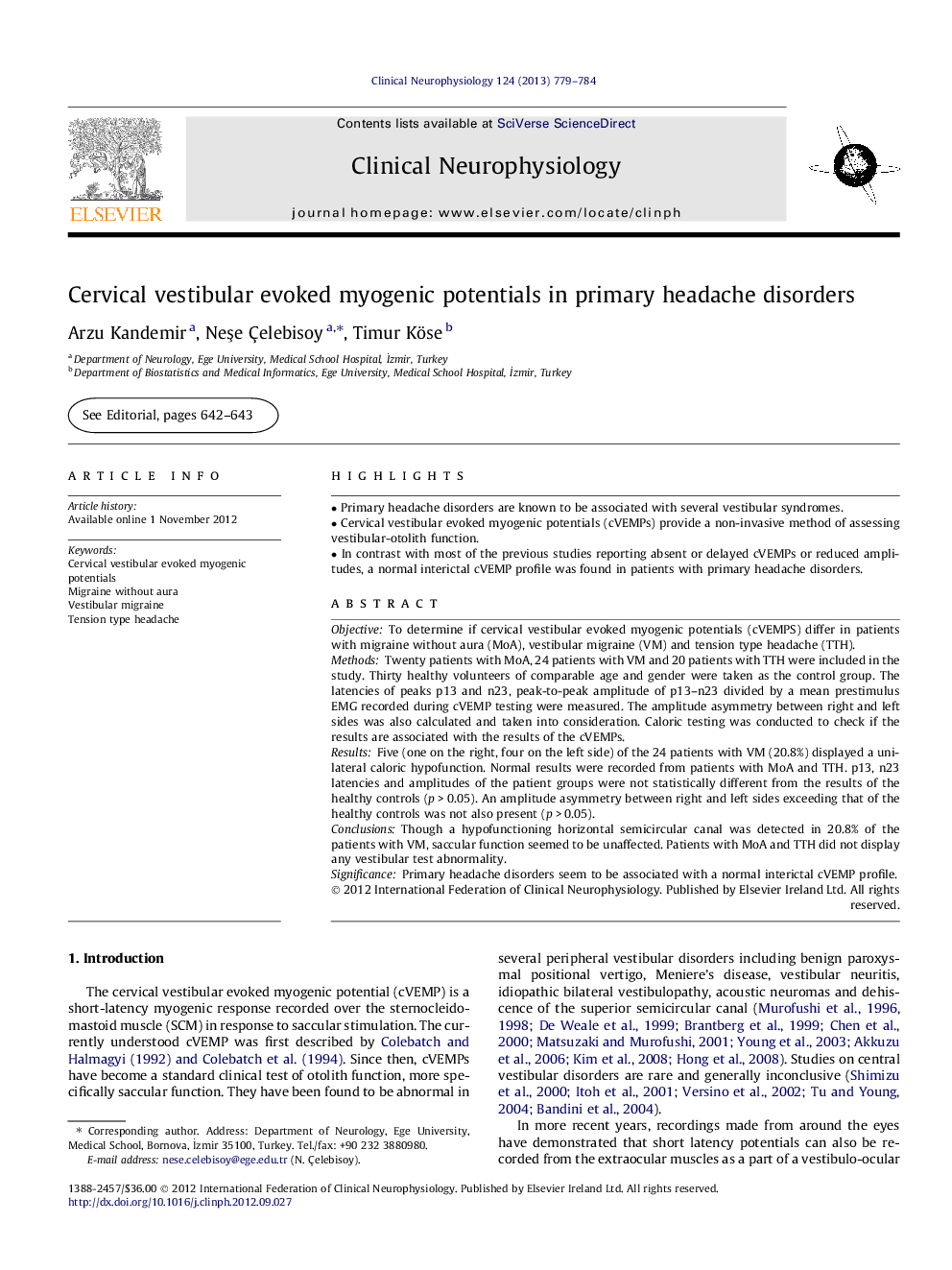| Article ID | Journal | Published Year | Pages | File Type |
|---|---|---|---|---|
| 3044188 | Clinical Neurophysiology | 2013 | 6 Pages |
ObjectiveTo determine if cervical vestibular evoked myogenic potentials (cVEMPS) differ in patients with migraine without aura (MoA), vestibular migraine (VM) and tension type headache (TTH).MethodsTwenty patients with MoA, 24 patients with VM and 20 patients with TTH were included in the study. Thirty healthy volunteers of comparable age and gender were taken as the control group. The latencies of peaks p13 and n23, peak-to-peak amplitude of p13–n23 divided by a mean prestimulus EMG recorded during cVEMP testing were measured. The amplitude asymmetry between right and left sides was also calculated and taken into consideration. Caloric testing was conducted to check if the results are associated with the results of the cVEMPs.ResultsFive (one on the right, four on the left side) of the 24 patients with VM (20.8%) displayed a unilateral caloric hypofunction. Normal results were recorded from patients with MoA and TTH. p13, n23 latencies and amplitudes of the patient groups were not statistically different from the results of the healthy controls (p > 0.05). An amplitude asymmetry between right and left sides exceeding that of the healthy controls was not also present (p > 0.05).ConclusionsThough a hypofunctioning horizontal semicircular canal was detected in 20.8% of the patients with VM, saccular function seemed to be unaffected. Patients with MoA and TTH did not display any vestibular test abnormality.SignificancePrimary headache disorders seem to be associated with a normal interictal cVEMP profile.
► Primary headache disorders are known to be associated with several vestibular syndromes. ► Cervical vestibular evoked myogenic potentials (cVEMPs) provide a non-invasive method of assessing vestibular-otolith function. ► In contrast with most of the previous studies reporting absent or delayed cVEMPs or reduced amplitudes, a normal interictal cVEMP profile was found in patients with primary headache disorders.
